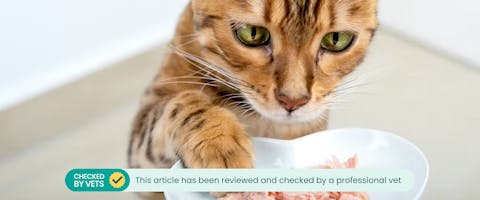Updated 23 June 2025
Want to get clued-up on what’s best to feed your cat? Well if you’ve been pondering over dry food or wet for cats, look no further. Below, find a vet-approved guide to wet vs. dry cat food, where we explore the benefits and drawbacks, key differences between wet and dry food types, and things cat owners should consider.
Is wet food or dry food better for cats?
Both wet and dry cat food can be good for your cat - it depends on your cat’s age and health needs.
Dry cat foods tend to be lower in fat than wet, whereas some wet can foods are higher in protein. Dry kibble is great for preventing plaque and tartar build-up, whereas wet cat food is beneficial for some cats experiencing oral health issues.
Generally speaking, a mixture of wet and dry cat food is best so that your cat can benefit from the range of nutrients, flavors and textures.
When choosing between wet and dry cat food, speak to your veterinarian and remember that felines are picky eaters, so take note of the food your cat prefers, and be sure to share a clear meal plan with your pet sitter.
Trending posts
Purr-use some of the top blogs our members have been loving this month- Top male dog names for your new furry friendGot a new furry family member in your pack? Check…
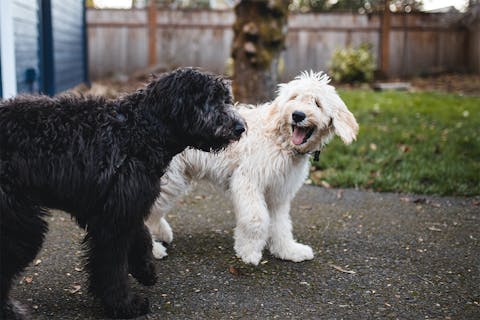
- Top female dog names for your new fluffy palWelcoming a new pooch into your family? Explore…

- 250+ gray cat names your silver feline will loveRecently welcomed a fluffy gray bundle of joy into…
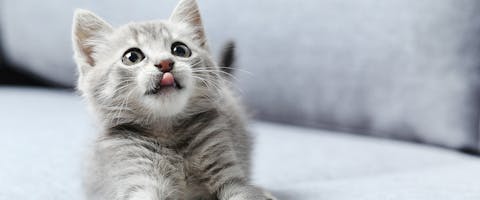
- What are normal pet sitting rates?Discover the average pet sitting rates for animals…
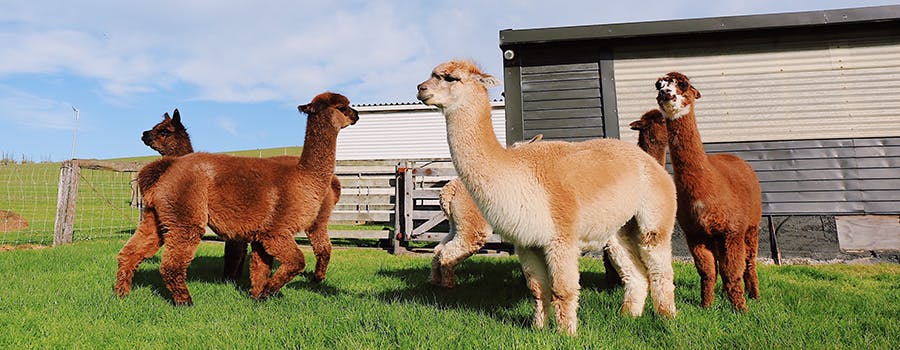
- Unique dog names to stand out from the packDare to be different with our list of the best…
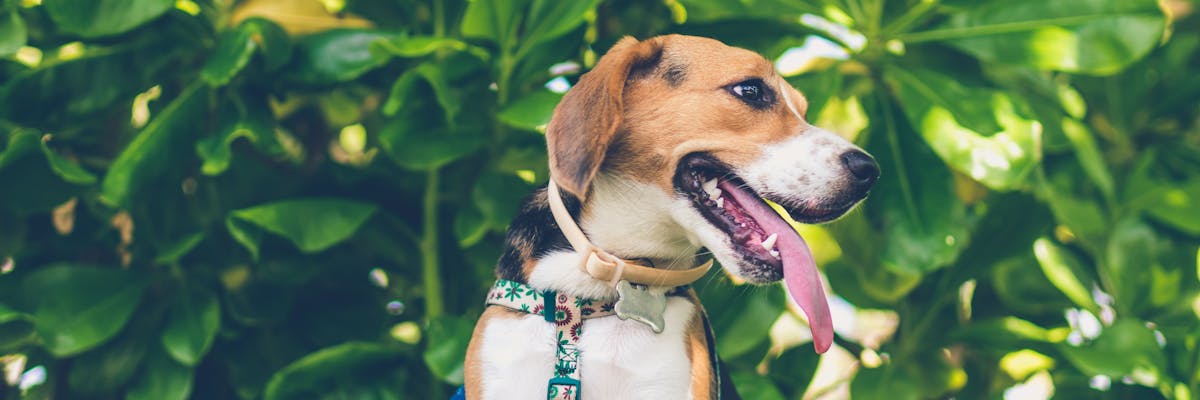
What are the key differences between wet vs. dry cat food?
Carbohydrate and fiber
Dry cat food normally contains more carbohydrate and fiber than wet cat food, which your cat needs for a healthy digestive system.
Protein and fat
Most wet cat foods contain more protein and fat than dry cat food. While cats need fat in their diets, too much can contribute to health problems like obesity, kidney disease, heart disease, and other complications.
Moisture content
Wet cat food has much higher moisture levels than dry cat food, which can be helpful for keeping your cat hydrated. Pet parents choosing a dry cat food should always serve water with their cat’s meal.
Shelf life
Dry cat food has a longer shelf life than wet cat food. It contains less water and doesn’t require refrigeration, meaning it’ll take longer to go moldy and stale. It can be stored in most places, as long as it's relatively cool and dry.
Wet cat food can last a while if in a sealed can or packet. However, if this is opened, it will need to be kept in a fridge to stop it from going off or attracting pests. Once opened, it will only last for a few days (but check the packaging for the specific shelf life of your cat food).
Package sizes
Wet cat food comes in small pouches in a variety of flavors, which makes it easier to determine what your cat likes. Dry biscuits are mostly sold in large bags, so it can create a lot of waste if your cat doesn’t enjoy the taste.
Dental health benefits
Dry cat food is great for maintaining good dental health in cats because it helps to remove the build up of plaque and tartar which can lead to dental issues. Dry cat food can also help maintain the strength of your cat’s jaw muscles.
Benefits of dry cat food
Thinking about feeding your cat dry food? Find a list of the benefits below:
- Great for cats with a sensitive stomach. If your cat has a sensitive stomach, biscuits can be helpful for settling them and keeping their digestive tract health in check.
- Longer shelf life. Dry cat foods have a much longer shelf life than wet cat foods, and don’t need to be refrigerated.
- They contain a wide variety of nutrients. Kibble contains all the carbohydrates, fiber, and minerals your cat needs to stay active.
- Helps to remove plaque and tatar. Chewing through dry cat biscuits helps to prevent the build up of plaque and tartar.
- Strengthens the jaw. Eating dry food takes more effort than soft wet food, so it’s a great way to keep your cat’s jaw naturally strong.
Drawbacks of dry cat food
Here are a few cons of dry cat food that pet parents should consider:
- Protein. While dry cat food certainly contains protein, you’ll likely need to occasionally supplement their meals with pieces of protein like cooked fish or chicken for a nutrient boost.
- Flavor variety. Dry cat foods don’t vary in flavor quite as much as wet cat foods, so your cat might get bored of dry kibble eventually.
- Low moisture levels. Dry cat food doesn’t contain much moisture, so it doesn’t help to keep your cat hydrated like wet food can.
Benefits of wet cat food
Think you might choose wet food for your cat? Find a few of the benefits of wet cat food below:
- High moisture content. Wet cat food has a higher moisture content than dry cat biscuits. Although cats can source water from elsewhere, it makes it easier for them to have water within the food they’re eating, too.
- Tastier. Some cats might prefer wet cat food or canned cat food because of its high levels of fat and protein, and the varied flavors.
- Softer. The softer texture of wet cat food can be helpful for older cats with joint or dental issues or kittens, as it’s easier to chew.
Drawbacks of wet cat food
There are a few drawbacks to feeding your cat canned cat food, or wet cat food from a packet - explore these below:
- Short shelf life. Wet cat food only keeps for a few days, so your cat needs to be okay with eating the same flavor until the can has run out.
- Transportability. Wet cat food must be kept in the refrigerator, so it’s difficult to transport while keeping your cat fed.
- Higher fat content. Some wet cat foods have a higher fat content, so try to get a vet-recommended wet cat food and be careful not to overfeed your cat.
Is wet food or dry food better for kittens?
Kittens should start on wet cat food while they’re weaning off their mom’s milk. Canned and packeted cat food is easier for kittens to chew and digest, and it contains more fat and protein, which is vital for kitten growth.
You can begin kittens on dry cat food when they’re completely weaned, but make sure it’s combined with wet food and access to water.
Just in case you didn’t know, baby cats start to wean from the age of three to four weeks, and are usually completely off their mom’s milk by two months old.
When choosing any type of wet or dry kitten food, be sure to pick ones that are age-appropriate, as kitten foods are purposefully made to support healthy growth and development.
Meet our veterinary expert, Liam
The article above has been checked by veterinarian Dr Liam Bullock BVSc (Hons) MRCVS.
As a small animal vet, Liam has spent time working in both first-opinion and referral-level practices. After gaining a strong affinity for educating owners about their pets, Liam decided to dedicate some of his non-clinical time to tutoring students, who were preparing for exams or struggling at school. By combining a passion for teaching others, and a keen interest in raising awareness about animal health issues, Liam decided to begin writing veterinary content. This now also allows him to raise awareness of important animal health issues outside of the consultation room.
Wet vs. dry cat food: FAQs
Do cats need wet food?
Cats don’t need to eat wet food, but it can add flavor, protein, and fats into your cat’s diet.
What can cats eat besides cat food?
You can enrich your cat’s meal with plain-cooked protein such as chicken or fish.
Is dry food bad for cats?
No, dry food is not bad for healthy cats - dry cat food contains a variety of essential nutrients, and can help to maintain your cat’s dental health, but it’s important to monitor your cat’s water intake as dry kibble contains little moisture. Dry cat food isn’t appropriate for all cats though, so speak to your vet for a recommendation.
Is wet food better for cats?
Wet pet food isn’t necessarily better for cats, but it can provide more flavor, fats and protein. Wet cat food is especially good for kittens who are weaning off their mom’s milk, as it’s high in protein and fats, and is easier to digest than dry kibble. In adult cats, dry food can be better for your cat’s oral health, as it helps to prevent plaque and tartar build-up.

